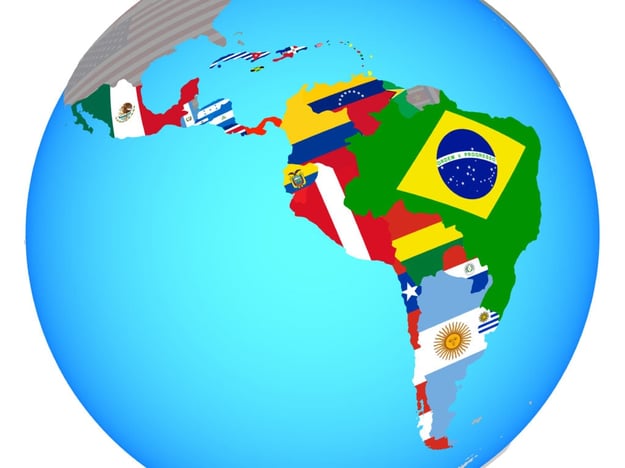The history of the Spanish language was shaped with the rise and fall of great empires. With foundations in Vulgar Latin, Spanish emerged alongside the collapse of Rome in the Iberian Peninsula thousands of years ago. This Romance language also underwent heavy influences by the Arabic dialect spoken by the Moors during the Muslim rule between 711 and 1492.
The earliest written texts with traces of Spanish were found in the Kingdom of Castile and efforts were made by King Alfonso to make it the standard for educated use of the language. This historical event offers a closer look to why Spanish is sometimes referred to as Castilian. This term is sometimes also used to denote the difference between Latin American Spanish and European Spanish.
Why is Spanish spoken in Latin America?
Spanish is the official language in Spain, Equatorial Guinea in Africa, 18 Latin American countries (Argentina, Bolivia, Chile, Colombia, Costa Rica, Cuba, Dominican Republic, Ecuador, El Salvador, Guatemala, Honduras, Mexico, Nicaragua, Panama, Paraguay, Peru, Uruguay, and Venezuela), as well as Puerto Rico. It was also an official language in the Philippines until 1987, but is now considered optional and voluntary.

Spanish is the official language in 18 countries in Latin America
Christopher Columbus brought Spanish along when he sailed to the Americas in the 15th century. The Catholic Church was instrumental in the spread of Spanish as Catholicism was taught to small children. The language started to expand when the children grew and relied on Spanish as their main language of communication. The expansion of Catholicism also contributed to Spanish taking over the local languages of the region. The combination of these historical and sociological events can explain the differences of the varieties Spanish spoken in Central and South America.
What is the difference between Latin American Spanish and European Spanish?
Latin American Spanish and European Spanish adhere generally to a standard writing system. The divergence between the two varieties might be particularly noticeable in several points of phonology and vocabulary.
In terms of pronunciation, the use of the dental fricative in European Spanish is very noticeable (like in cena, cigarro, zapato, etc.) On the contrary, Latin Americans pronounce the letters c and z as s. Another difference between Latin American Spanish and European Spanish is the use of ustedes instead of vosotros even when the conversation is not formal.
Another grammatical difference is the use of vos instead of tú in some Latin American countries such as Argentina and Uruguay. The conjugation of the singular second-person can also be different from European Spanish, where instead of the conjugation quieres, you would use querés. It is also common for Latin Americans to favour the use of the past simple instead of the present simple when describing recent events ( me quedé en casa hoy instead of me he quedado en casa hoy).
However, the main difference between Latin American Spanish and European difference is mainly related to vocabulary. Some examples are: 1- Juice ( zumo in Spain), ( jugo in Latin America) 2- Car ( coche in Spain), ( carro in Latin America) 3- Computer ( ordenador in Spain), ( computadora in Latin America) 4- Mobile ( móvil in Spain), ( celular in Latin America) 5- Drive ( conducir in Spain), ( manejar in Latin America)
Conclusions
Despite the difference between Latin American Spanish and European Spanish, the two varieties are mutually intelligible to a high degree. Learning Spanish would enable you to communicate freely in both continents without major issues.
If you want to read about bigger dialectal differences in the realm of the same language, take a look at: Arabic dialects: a close look at North African Arabic.



